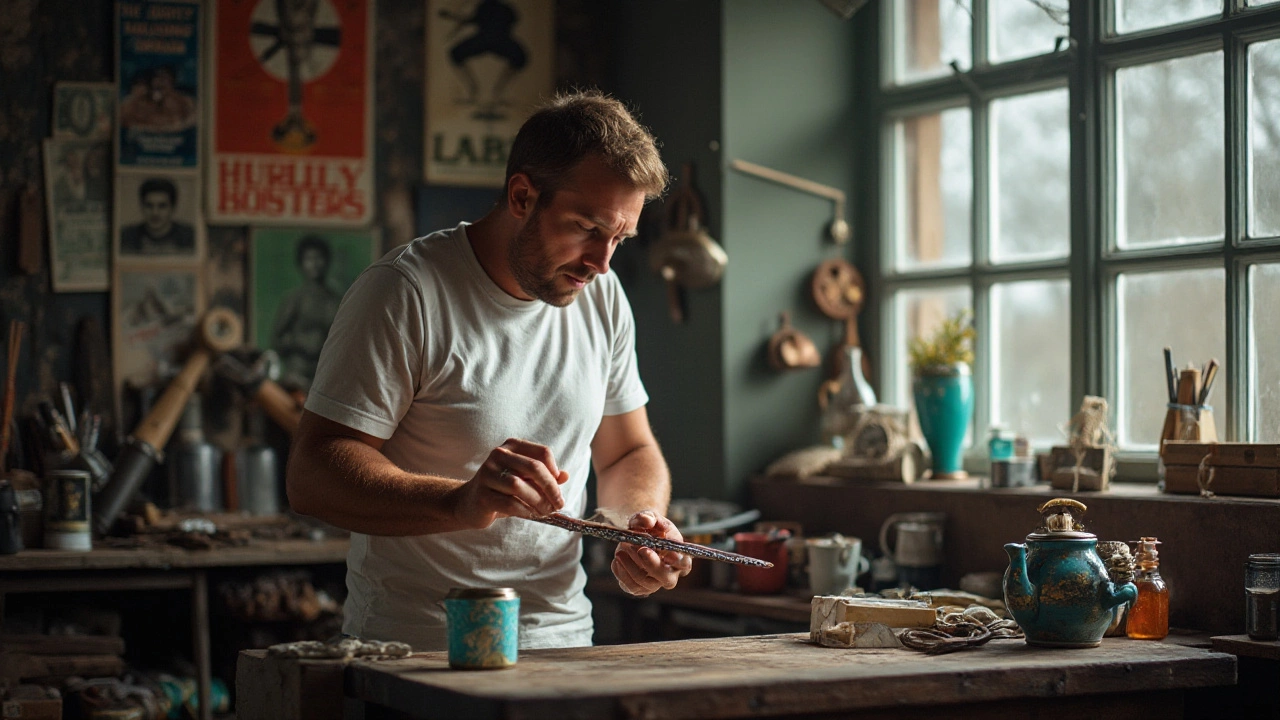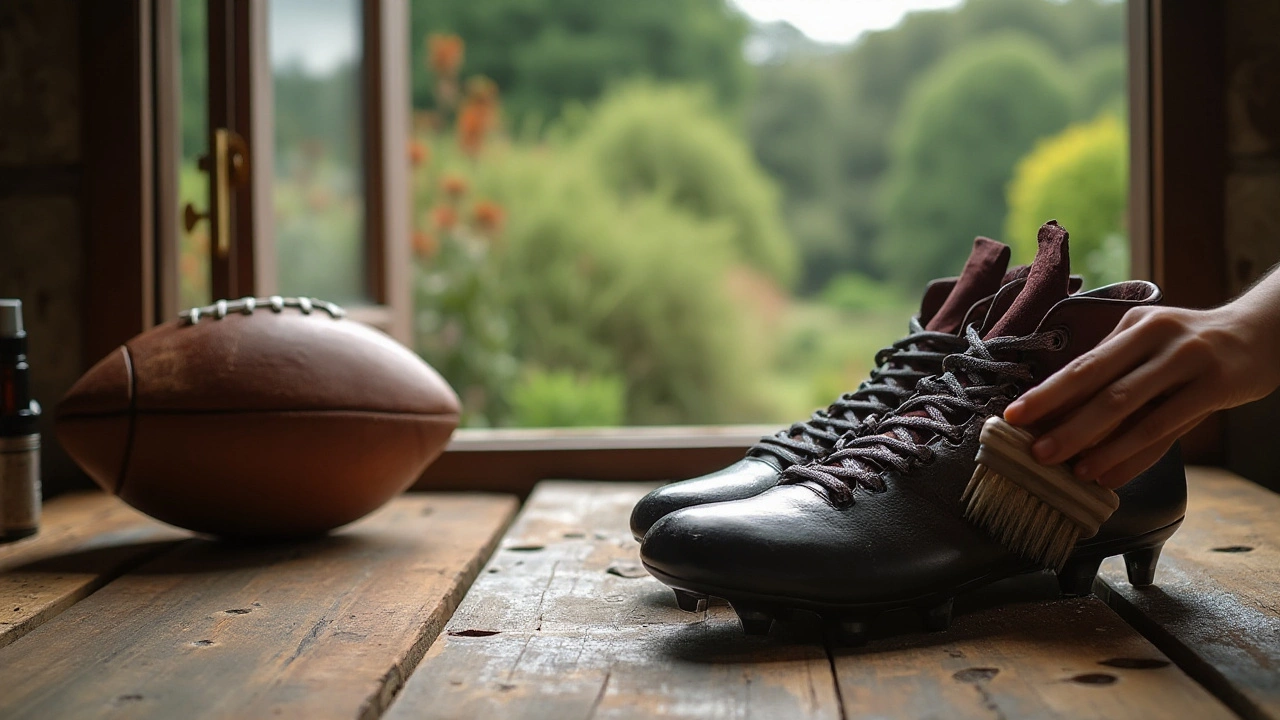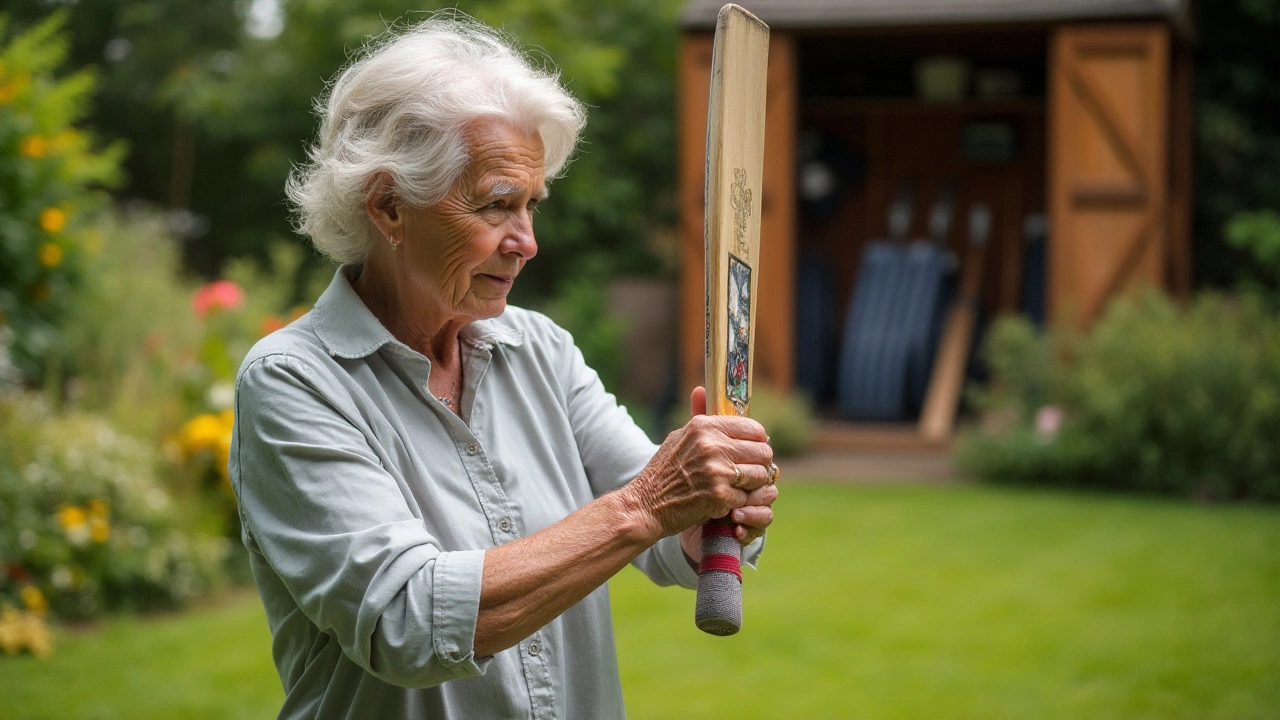Essential Tips for Maintaining Your Sports Gear at Home

Maintaining sports equipment is more than just about keeping it clean—it's about ensuring that it performs well and lasts for as long as possible. Regardless of whether you're a casual player or a seasoned pro, taking good care of your gear is essential.
Different types of sports equipment require different care routines, largely depending on their materials and the kind of wear and tear they endure. From cleaning the grime off your tennis rackets to ensuring the leather of your footballs stays supple, each item has its own set of needs.
Storage plays a critical role, too. Finding the right place to house your gear when it's not in use can prevent unnecessary damage. And let’s not forget about those little DIY tricks that can salvage a piece of equipment needing minor repairs.
By incorporating regular inspections and protective measures during off-seasons, you can ensure your sports equipment remains reliable and ready for action whenever you need it. Dive into the detailed sections to explore how you can master the art of equipment maintenance.
- Understanding Material Needs
- Cleaning Techniques for Different Equipment
- Proper Storage Solutions
- DIY Repair Methods
- Regular Inspections and Checks
- Off-Season Care Tips
Understanding Material Needs
Caring for your sports equipment begins with understanding the diverse materials they are made from. Various sports gear, from tennis rackets to football helmets, utilizes different materials that require specific attention to maintain durability and functionality. For instance, leather, often used in balls and gloves, needs regular conditioning to prevent it from cracking or hardening. This is essential because untreated leather not only impacts performance but can also become uncomfortable to use during games.
In addition, synthetic materials such as polyester or nylon are commonly found in sports attire and bags. These materials are favored for their durability and resistance to environmental elements. However, they can easily accumulate unpleasant odors due to sweat and moisture, making regular washing essential. When washing, it is advisable to turn items inside out and use gentle detergents to preserve the fiber structure and color of the equipment.
Sports gear made of metal or carbon fiber, such as bicycles or certain parts of gym machines, have their own set of care requirements. These should be regularly checked for rust or corrosion, using appropriate cleaning agents to wipe down surfaces. A gentle lubricant can be applied to moving parts to maintain fluidity and prevent wear and tear. Neglecting these materials can increase the risk of accidents during their use, which is why understanding their maintenance needs is crucial.
"The longevity of any sports equipment is significantly determined by appropriate material-specific care routines," advises renowned sports gear expert, Dr. Michael Reynolds.
Let's not forget rubber, often used in badminton grips or the soles of athletic shoes. This material is prone to cracking when exposed to extreme heat or cold. To extend the life of rubber-based items, store them in a cool, dry place and clean with mild soap and warm water. It helps maintain the grip and flexibility, vital for sports performance.
Occasionally, sports gear requires a special approach—something as simple as a regular wipe-down can suffice, or it might need a full disassembly for deeper cleaning, particularly in cases of composite materials. Regardless of the sport, keeping the individual material needs in mind is an indispensable step toward achieving the peak performance and longevity of your gear.
Cleaning Techniques for Different Equipment
Keeping your sports equipment clean isn't just about aesthetics—it's about function and longevity. Different sports gear requires tailored care due to the diversity in materials and uses. Take, for example, a basketball; it is usually made from a composite leather material that thrives with routine gentle cleaning and conditioning. To start, use a damp cloth to wipe the surface, then follow up with a specialized leather cleaner to maintain its texture.
Now consider the realm of tennis, where rackets demand their own special treatment. A common issue tennis players face with their rackets is residue build-up on the strings. A simple solution here is to use a toothbrush with mild soap and water to gently scrub away accumulated dirt without damaging the frame or altering string tension. Remember, what works for one piece of gear might spell disaster for another, so tailored approaches are key.
Interestingly, a recent survey by the Sporting Goods Manufacturers Association found that regular cleaning can extend a piece of equipment's life by up to 30%. Some professional athletes swear by specific regimens, as captured in a quote from the renowned tennis coach John Newcombe:
"Just like a well-kept racquet can enhance your game, a neglected one can equally hold it back. Cleanliness and care are always part of the preparation routine."
Let's not forget gear like football helmets and protective padding, which often harbor bacteria due to sweat exposure. Disinfecting these items is crucial. A blend of water and white vinegar in a spray bottle can make an excellent natural disinfectant. Spray lightly and wipe down with a microfiber cloth, ensuring maximum cleanliness without abrasiveness.
Finally, for those who enjoy winter sports, ski and snowboard maintenance can’t be overlooked. Regularly cleaning the bases and edges is necessary to ensure both safety and performance. Use a brass ski brush to remove old wax and debris, followed by a citrus solvent to clean the base. This keeps the skis in pristine condition and optimizes their glide on the snowy slopes. Through strategic cleaning methods, you can substantially prolong the life of your gear while maintaining peak performance.

Proper Storage Solutions
When it comes to sports equipment, how you store your gear can significantly impact its longevity and performance. Often, people overlook this crucial aspect, stuffing their valued possessions in unsuitable spaces where they're prone to damage. Take, for instance, your tennis rackets. Leaving them in direct sunlight or moist environments can alter their tension or warp the frame. This can impact your game drastically the next time you hit the court. Ideally, you should store them in a dry, cool place, away from direct sunlight. Consider investing in a specialized racket bag with thermal protection to keep them safe and sound.
Musical instruments aren't the only things sensitive to temperature extremes; basketballs suffer tremendously if not stored properly. People often leave them slumped in the garage, forgetting that temperature swings can cause the material to expand and contract, leading to cracks or deformities. A simple solution is to store these balls in a well-ventilated bag at room temperature. Indoor solutions are always recommended for equipment made of rubber or leather to maintain their worth over time.
Whether it's your mountain bike needing to be hung on a wall bracket to avoid flat spots on the tires or your skiing gear requiring storage that prevents moisture damage, each piece of gear benefits from thoughtful storage. As a general rule, you want the surroundings to be much like Goldilocks: not too humid, not too dry, but just right. Utilize racks and compartments to segregate items and keep them off the floor, ensuring they aren't exposed to dust and dirt that can degrade their quality.
“Well taken care of equipment feels like an extension of your body—it doesn’t hold you back; it inspires you to excel,” says sports expert Joe Abrahams.
Organizing with purpose can turn the chaos of clutter into serene order, which is especially important if you're juggling an assortment of sporting goods. Creating a dedicated space in your home or garage with shelving and hooks can help immensely. This organization not only helps in prolonging the life of your gear but also assists in quick access when you're gearing up for play. Investing in quality bins, racks, and climate-controlled storage solutions can transform your approach to how you care for your valuable equipment. Make your investments work for you by taking the extra step toward secure, protective storage.
DIY Repair Methods
There's a certain satisfaction in being able to fix things yourself, not to mention the cost savings and convenience it provides. When your sports equipment shows signs of wear and tear, it doesn't necessarily mean you need to rush out and buy something new. With the right tools and a bit of knowledge, you can address many common issues right at home. Let's start with the basics: assessing the damage. Before diving into any repair work, closely inspect the item to determine what needs fixing. Is it a superficial scratch or something more serious like a loose handle or broken string? Understanding the scope of the damage will guide you in choosing the appropriate method of repair.
Once you've assessed the damage, gather the necessary repair materials. For most general repairs, having a toolkit with essential items like adhesives, lubricants, patches, and replacement parts is a great starting point. Tennis rackets, for example, often require restringing, which is a skill that you can learn with some practice. A stringing machine might be a worthwhile investment if you frequently need to restring your rackets. Similarly, fixing a punctured soccer ball can often be accomplished with a needle and ball pump paired with a rubber patch kit.
Tips for Common Repairs
One common issue across various sports gear is leather damage. Whether it's a baseball glove that needs conditioning or boxing gloves showing cracks, proper treatment can extend the life of the leather significantly. For leather maintenance, use a quality conditioner to keep it supple and flexible. Applying the conditioner is simple. Clean the surface first with a damp cloth to remove any dust or dirt, then, using your hands or a soft cloth, work the conditioner into the leather using circular motions. Allow it to absorb for at least an hour before wiping off any excess product.
Another frequent repair need involves fixing grips and handles on gear like golf clubs and bikes. Over time, these may become loose or worn out. Re-gripping does not have to be daunting—simply remove the old grip with a utility knife, taking care not to damage the underlying shaft. Clean the exposed area thoroughly to remove any leftover adhesive. Then, apply a double-sided adhesive tape, slide on the new grip while ensuring it's perfectly aligned, and let it dry.
"A small investment in repair tools goes a long way in keeping your sports gear in top condition," says James Whittaker, a veteran sports equipment technician. "Understanding the basic repair techniques not only saves money but also ensures you get the most out of your investments."
If you're dealing with bicycle repairs—specifically flat tires or faulty chains—knowing how to handle these can be a game changer. Consider buying a repair stand that elevates your bike, making the job easier and more efficient. For a flat tire, you'll need a patch kit or new inner tube, tire levers, and a hand pump. First, remove the wheel and deflate it completely. Use tire levers to gently prise the tire off the rim. Check the inner tube for punctures by inflating slightly and listening for escaping air. Patch the hole or replace the tube, then carefully reassemble.
To wrap it all up, it's advisable to keep a notebook or digital record of your repairs, noting what was done and when. This not only helps in planning future maintenance but also aids in understanding recurring issues. By empowering yourself with these DIY repair techniques, you not only ensure that your gear remains immaculate but also gain a profound appreciation for your equipment’s design and function. Engaging in these repairs can transform a mundane task into an opportunity for learning and satisfaction.

Regular Inspections and Checks
Regular inspections and checks of your sports equipment serve as a proactive way to catch any signs of wear and tear before they become a bigger problem. Begin by creating a routine inspection schedule. Depending on how often you use your gear, you might want to inspect it monthly or even weekly. Take note of any visible damage, like cracks in baseball bats or fraying nets on basketball hoops. These small issues can quickly escalate if left unattended.
When inspecting various types of equipment, pay close attention to the different components. For instance, check the tension and integrity of strings on a tennis racket, ensuring that no loose or broken strings are apparent. In football gear, verify the air pressure of the balls and examine their surfaces for any peeling leather or seams starting to give way. If you've ever wondered why inspections are crucial, let's consider what experts say. In an insightful Sports Illustrated piece, the equipment manager of a major league team emphasized,
"Regular checks prevent catastrophic failures. It's much like changing the oil in your car—you can often save a piece of gear with a simple routine check."
Another key part of these inspections is keeping an eye out for any strange noises or changes in how equipment handles during use. A squeaky treadmill or a wobbly bike wheel shouldn’t be ignored, as these are indicators of deeper mechanical issues. Catching these early can save both time and money. Professional athletes often rely on their gear more than casual users and therefore tend to adhere strictly to regular inspection protocols—this diligence shows as their equipment consistently performs at peak readiness.
Documenting inspection results can help maintain a log that tracks recurring issues, providing useful information that can guide future maintenance efforts. Checklists can be handy when conducting the inspection. Items to check can include screws needing tightening, handheld grips starting to loosen, or the need to lubricate moving parts. Take your time here; a hasty inspection can miss the details which make all the difference between keeping equipment in top shape versus letting it degrade.
For gear with digital components, such as electronic exercise bikes or fitness trackers, it's important to ensure that the firmware is up to date and batteries are holding a charge efficiently. Sometimes, manufacturer updates rectify bugs and improve functionality—so stay abreast of those potential enhancements. Whether it be through settings menus or display alerts, checking on the digital health of your fitness tech is just as important as the physical checks on more traditional equipment.
Lastly, in the spirit of keeping your sports equipment well-maintained, always store the gear properly after inspecting it. This might mean deflating inflatable items slightly between uses, hanging items to avoid droop, or ensuring that batteries are removed from electronic devices not in use for a long period to prevent leakage damage. A little time and effort regularly expended on inspections and checks pay off by prolonging the life and reliability of your cherished sports gear.
Off-Season Care Tips
When your sports schedule winds down, it's time to focus on some essential off-season care tips to keep your sports equipment in peak condition. Resting your gear doesn't mean neglecting it. Instead, it's the perfect opportunity to give each item the attention it deserves, ensuring that when the season ramps up again, you're ready to go with equipment that feels new. Begin by thoroughly cleaning everything in great detail. For items like sports equipment made from leather, consider using a specialized conditioner to maintain strength and flexibility over long periods. This prevents cracking and extends the life of items like footballs and gloves.
Proper storage is crucial during the off-season. Make sure to store your gear in a dry, well-ventilated area to prevent mildew and dampness. Basements and garages can often be damp, so be wary of placing items where moisture might accumulate. Instead, opt for interior closets or even designated storage areas explicitly designed for sports equipment. Organize items with shelves or appropriate racks, ensuring they are off the ground and away from any potential leaks or pests.
Consider periodic inspections as part of your off-season routine. Check for any acquired damage or wear and tear. Minor issues, like loose screws on your bike or frayed strings on a tennis racket, can be dealt with easily during this downtime, avoiding more severe problems during active months. Invest in a small toolkit designed for gear maintenance, making minor repairs simple and accessible.
These inspections provide a chance to upgrade or replace parts if worn. For serious athletes, off-season is also the perfect time to evaluate new technologies and advancements in gear, possibly phasing out old equipment for newer, more efficient models.
Particularly for outdoor sports gear, sunlight or temperature changes could affect the material quality over time. Ensure you keep all items out of direct sunlight, which can fade colors and weaken certain materials, leading to compromised performance. If you live in a region with extreme temperatures, avoid storing items in attics or outdoor sheds where weather fluctuations are significant.
"Recognizing the impact of environmental conditions on gear is crucial. An insightful reminder from the National Sporting Goods Association notes that understanding how climate affects your equipment isn't just about care—it's an insurance policy behind your performance," share Sam Greaves, a well-regarded sports equipment analyst.
Additionally, this off-peak time is also ideal for considering professional maintenance services for items that require expert care. Ski equipment, for instance, often benefits from professional sharpening and waxing.
This could make a vast difference in performance when winter sports resume. Lastly, involve yourself in community swap events or marketplaces during the off-season. This can be an excellent way to exchange or sell off items you might not need next season while acquiring others.
Creating an off-season plan for equipment care ensures that when you're ready to hit the courts, fields, or gyms again, your gear will be too. Keep detailed notes of what actions you've taken and any items requiring attention when the season returns. Organized, well-cared-for equipment is not only better for your performance but easier on your wallet in the long run.
